2. Basic components and general information
Transmitter and receiver
Any radio system consists of a transmitter and a receiver at least. In handheld mics, the transmitter and the mic are contained within a single unit, and they are therefore also referred to as handheld transmitters.
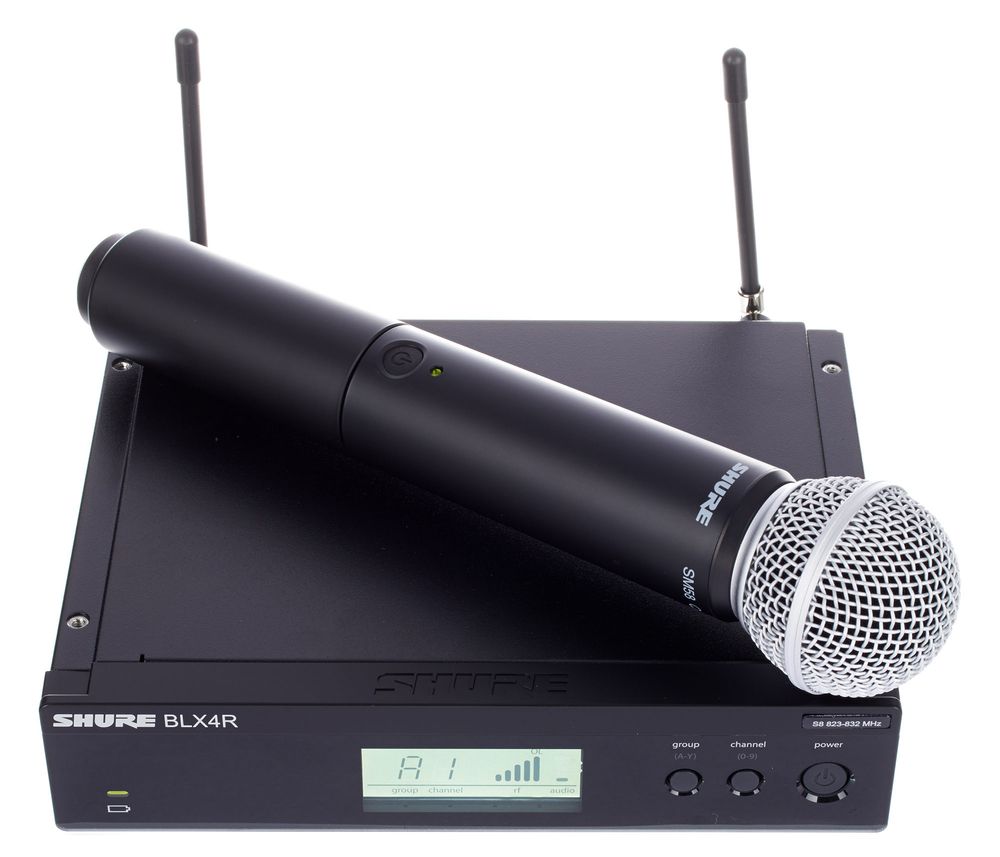
Handheld transmitter and receiver
In connection with a variety of external mics, such as headsets, clip-on mics (lavalier mics) and a variety of instrument mics, the transmitter is usually a pocket transmitter (or bodypack). A short cable connects the mic to the bodypack, which can be clipped to the user's belt or a variety of other body parts, or the instrument, with straps and suchlike. A third type is the plug-in transmitter, which plugs into the XLR connection of a cable mic and turns it into a radio mic. There are also special types, such as instrument mics with integrated transmitter, or radio tabletop speaker stations, but these are encountered relatively rarely.
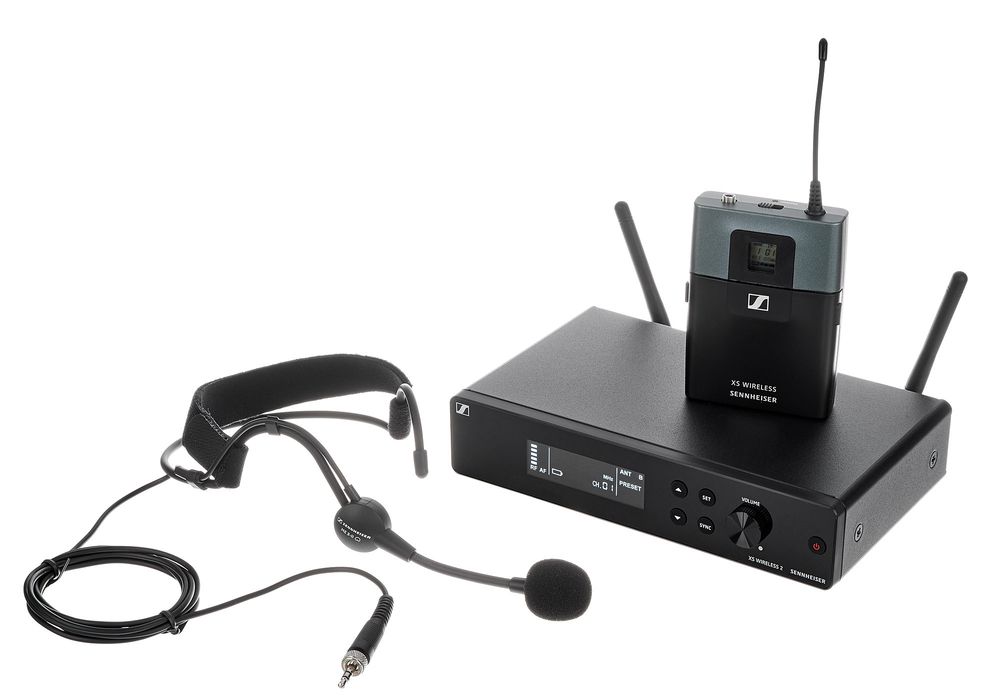
Headset with bodypack and receiver

Creative way of attaching the transmitter
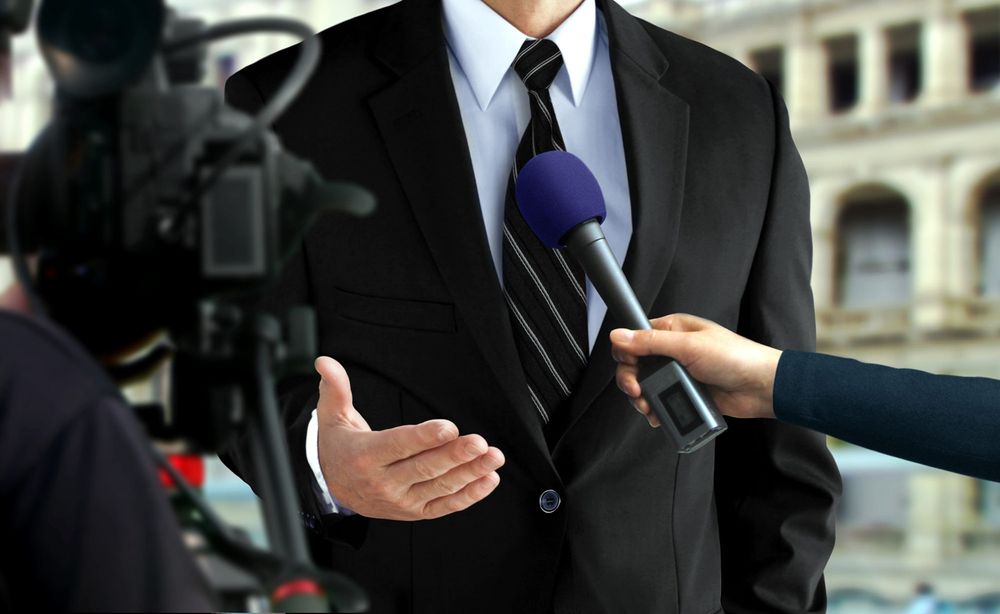
News reporter mic with plug-in transmitter
The counterpart to the transmitter is the receiver. It receives on the same frequency that its transmitter uses. Important to know: in order to avoid interference, two transmitters must never transmit on the same frequency. Consequently, a single receiver can also not receive two transmitters simultaneously. For four radio mics, for example, you therefore need four receivers on four different frequencies. A synonym for frequency here is "channel“. Switchable channels are a useful feature in this respect. With fixed-frequency sets, which you'll really only find in the most basic of entry-level models, you'll need to make sure that you don't buy models on the same frequency from the start.

Setup with 4 radio mics
An exception (which isn't one, really), is the double or multiple receiver. This is basically a number of receivers in a single casing. Since multiple receivers also come with a multiple of the price tag, and since buying several individual receivers is just as effective, you'll not encounter a lot of multiple receivers.
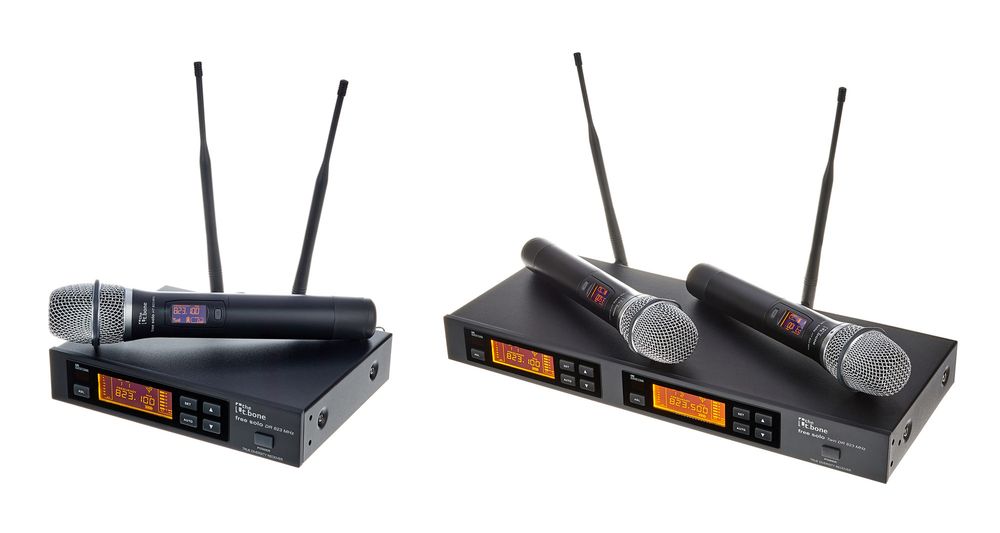
Comparison of single and multiple receiver sets
Most receivers are conceived for stationary use, which means that they draw power from a socket through a power supply pack. But there are also receivers that run on batteries, which lend themselves for use with cameras and mobile recorders, or by buskers.
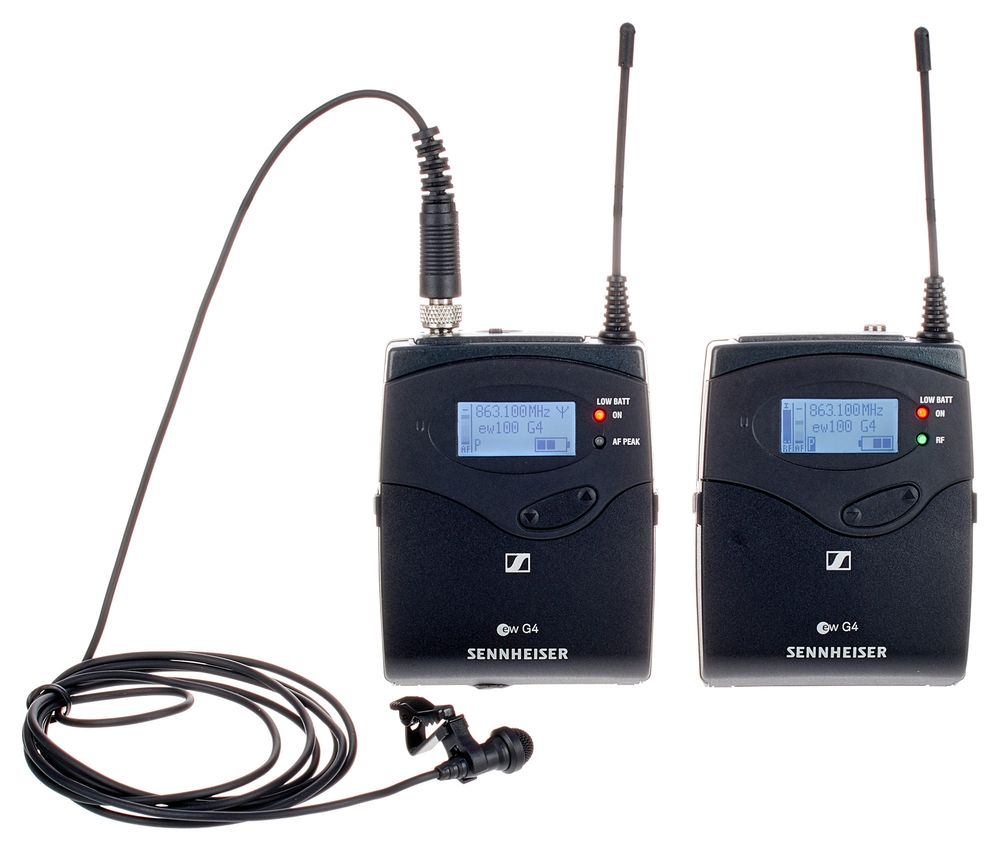
Mic, transmitter and receiver for mobile use with camera
As far as the energy supply for the transmitter and, if present, the mobile receiver, is concerned, most manufacturers go for the classic 1.5 V AA battery (mignon), with the 1.5 AAA battery or the 9V battery found much more infrequently. Usually, a set of fully charged batteries will see you through one or several performances.
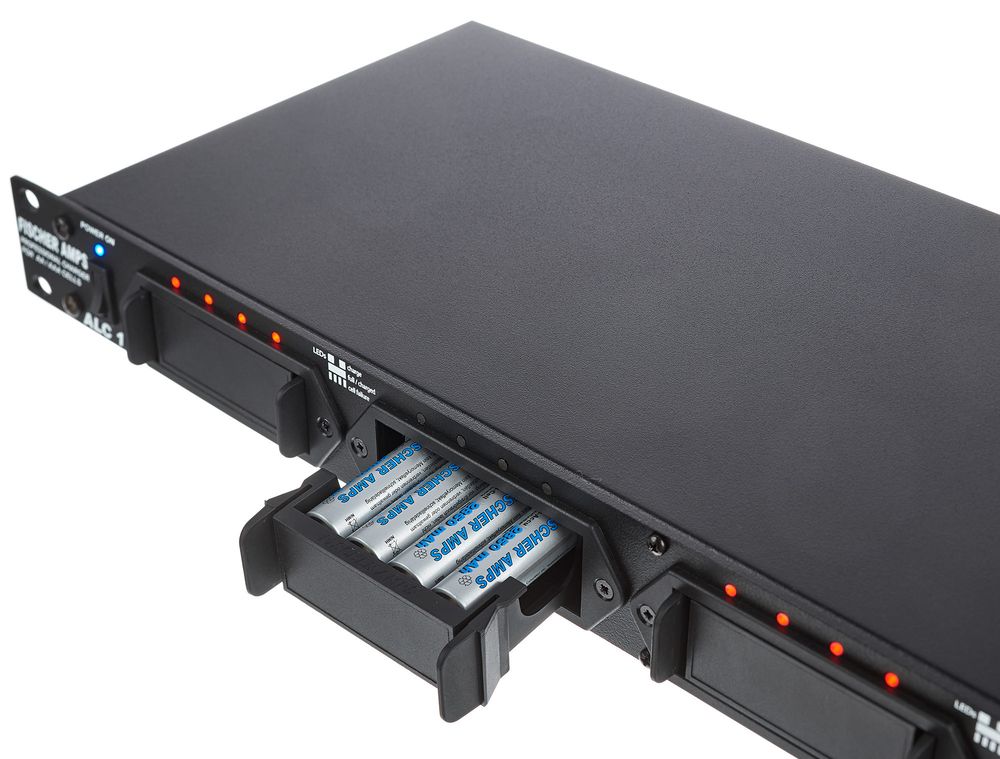
Charger for 16x AA rechargeable batteries for mounting into 19" rack
Using the commonly available NiMH rechargeable batteries is better for the environment. Their output voltage is a little lower, but this is usually no problem. However, their running time is significantly shorter compared to high-quality single-use batteries, so you'd better make sure you have some fully charged replacement batteries on you for longer sets.
More and more manufacturers use modern lithium-ion batteries. If they are not removable, check out the running time and find a way to charge the devices in breaks, if necessary. A power bank may prove useful on the road.
The microphone
This is your first important purchasing decision. The mic has a crucial impact on the resulting sound. It is the decisive factor in feedback, and sometimes, in theatres for example, optics may be an important consideration as well. The mic types available for spoken word and singing are handheld mics, headests and lavalier mics.
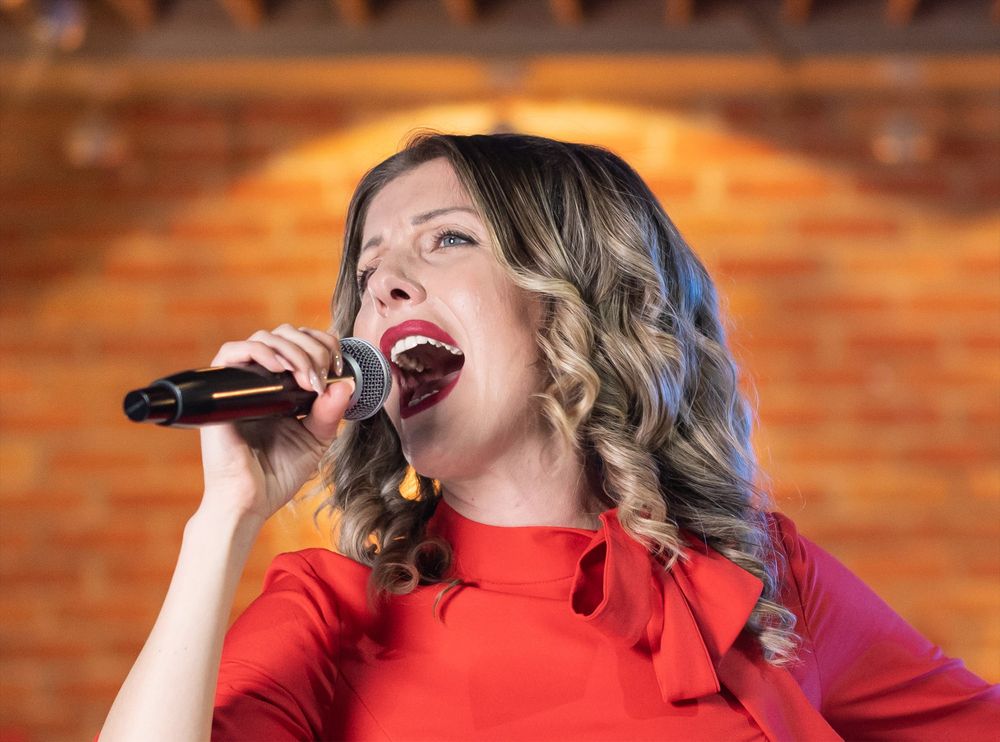
Handheld mic
Those who do not necessarily need their hands free would be well-advised to opt for a handheld mic. Since they are larger, manufacturers need to make the fewest engineering compromises. Furthermore, a mic held in your hand or in a stand is better suited for radio operation than a bodypack, which is usually worn tight on the sound-absorbing body. An experienced singer will furthermore be able to vary their distance from the mic and thus influence their sound and volume. Which mic is the best for your indivdual sound is hard to say beyond some general notes. If you already have experience with cable mics, you may let this experience guide you. In general, vocalists of rock bands will be best served by a dynamic vocal mic while a condenser mic is the better choice whenever minute details need to be trasnmitted accurately.
Headsets make for somewhat more convenient handling. They are useful especially for singers or speakers who cannot deal with hanhdheld mics. The models available are, however, significantly different depending on the uses they are intended for. Fundamentally, you can distinguish two types: low-feedback headsets for musicians and unobtrusive mics for use in the theatre and on TV.
For musicians, and on noisy stages generally, high resistance to feedback is the most important criterion. To achieve this, the mic capsule needs to have a distinct directional characteristric (cardioid or hypercardioid) and must be placed directly or diagonally in front of the mouth. In this position, a sufficient pop filter is indispensable. There can be nothing unobtrusive about such a mic, which is why they are usually not even avaliable in skin tones. Bulky and black: this is what your headset for a rock concert will look like.

Headset for musicians
On TV, in the theatre and wherever else there is no or only little sound broadcast, the mic may be placed a little further back along the cheek. Popping noises disapper at greater distance from the mouth, as does breathing noise. The voice sounds more natural and less nasal from a few centrimetres' distance. The pop filter may be dispensed with entirely, and the mic capsule may be correspondingly small. Often, these mics come with a balanced omnidirectional characteristic (non-directional). There is also a compromise available: discreet directional mics which are comparatively further away form the mouth than the bulky black models and which are a good choice for situations where there is a danger of feedback but the volumes are relatively lower. Visually restrained means ideal for TV, hosting, and theatre uses.
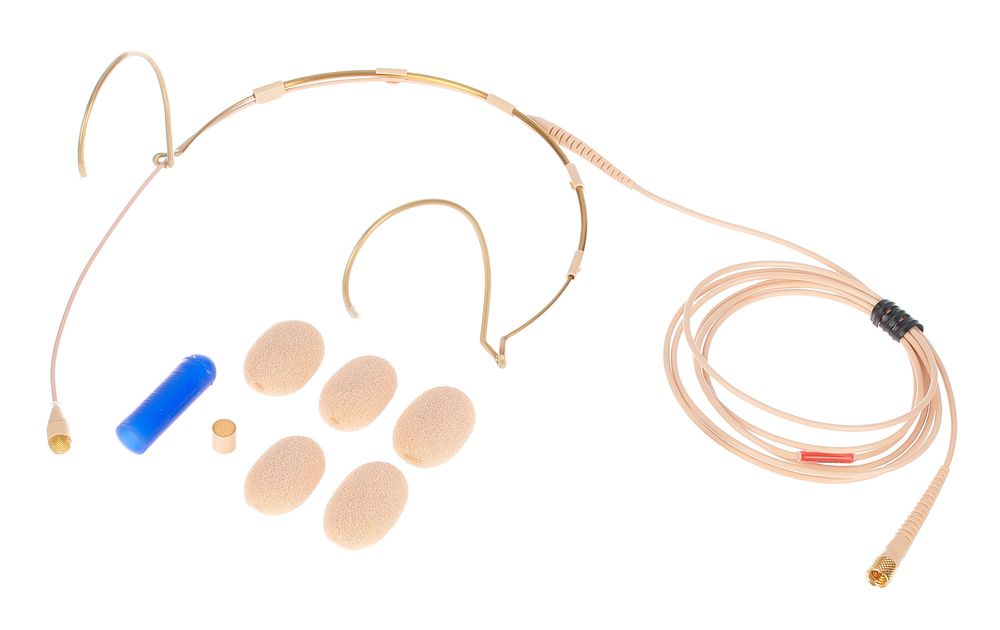
Headset for theatre and TV
Lavalier mics (clip-on mics) are even less noticeable. They are clipped onto clothes, but alternative creative placement is possible. This type of mic is often used in TV and video recordings as well as in the theatre. For live use, lavalier mics must be used with great forethought: due to the large distance from the mouth, the mic catches quite a lot of sorrounding noises, including the loudspeakers', which will lead to feedback quickly. Compared to a headset, head movements, too, may lead to changes in volume and sound. Otherwise, a lavalier mic produces very natural sound, thanks again to the distance from the mouth, which is perfect for recording.
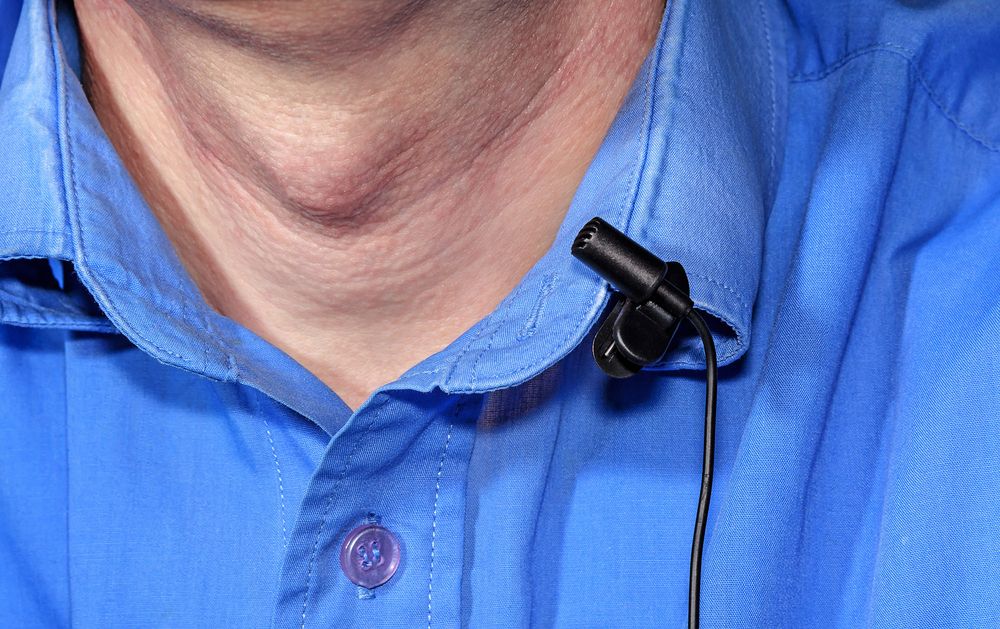
Lavalier mic
Mics are available not only for the human voice. Almost any instrument's sound can be picked up by a specific instrument mic and transmitted via radio. Some mics are fixed to the instrument with adhesivce, others are clipped or velcroed on. Sometimes, lavalier mics are used for instruments, or headsets are used to pick up pan flute sounds. The range of individual solutions is a wide as the variety of instruments. When talking about radio mics, the fundamental considerations are similar to those of headsets and lavaliler mics.
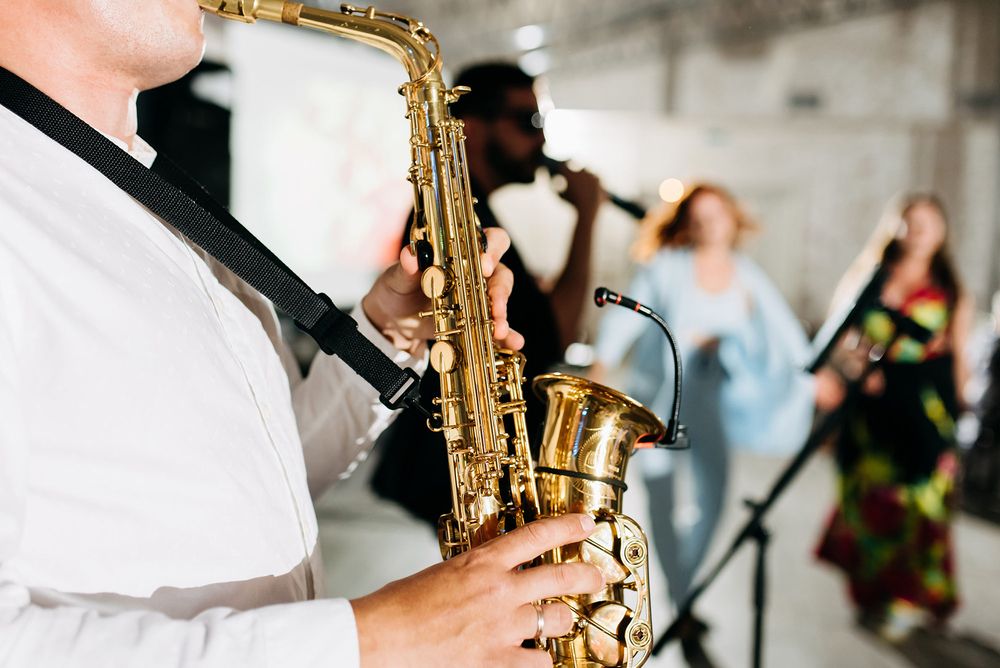
Instrument mic
The bug about the plug
While XLR connections have become the standard for cable mics on stage and in the studio, body packs and the associated mics always use a manufacturer-specific connection. Unfortunately, this means that every manufacturer comes up with their own solutions regarding the plug system, channel occupation and voltage supply of the connected (condenser) mics. Compatibility between different manufacturers' mics are the exception rather than the rule. So you must absolutely make sure that you choose a mic that works with the radio system. Often, you'll be bound to one manufacturer, but compatible equipment from other manufacturers may be available. Our team in the PA department is happy to assist you in your choice.















